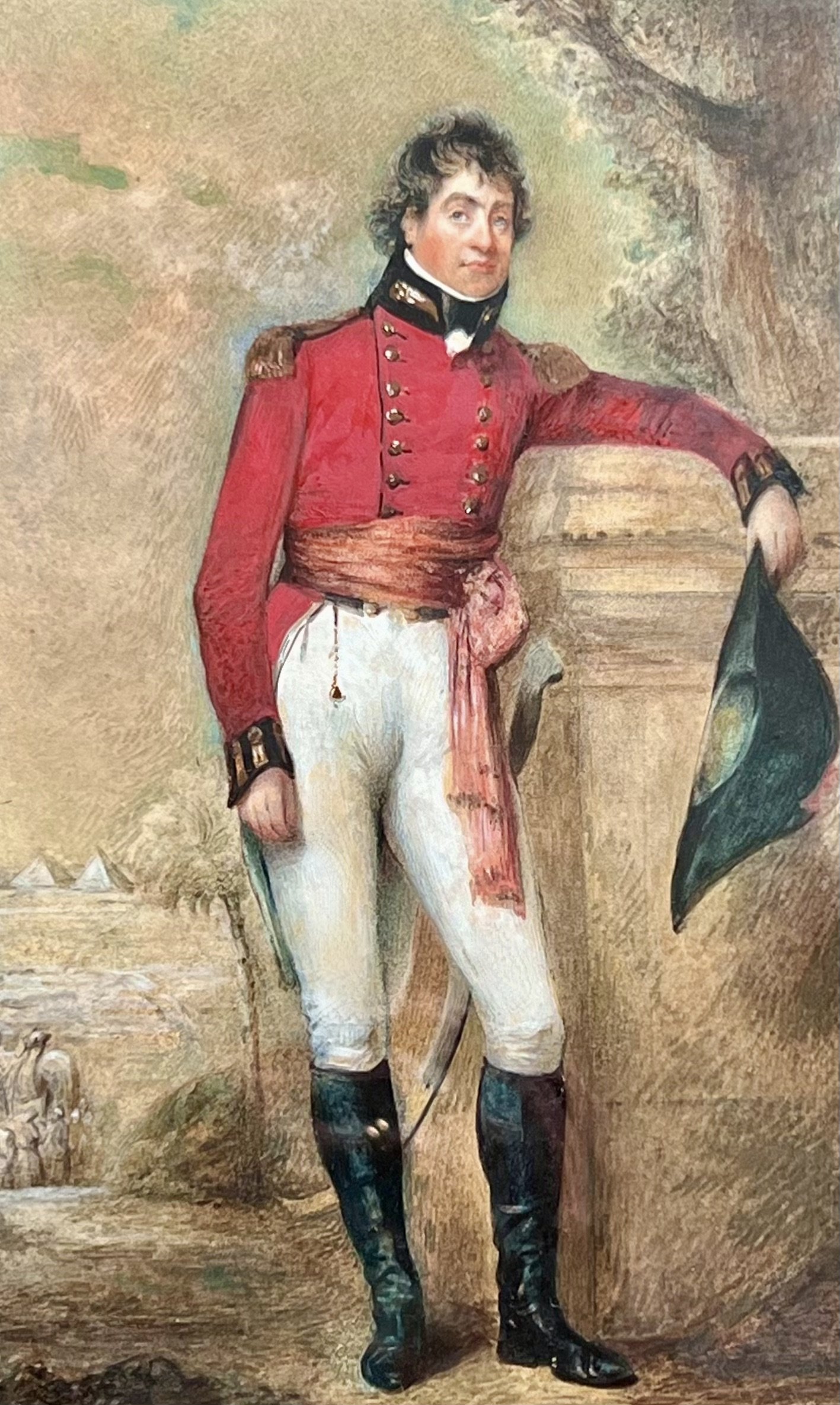
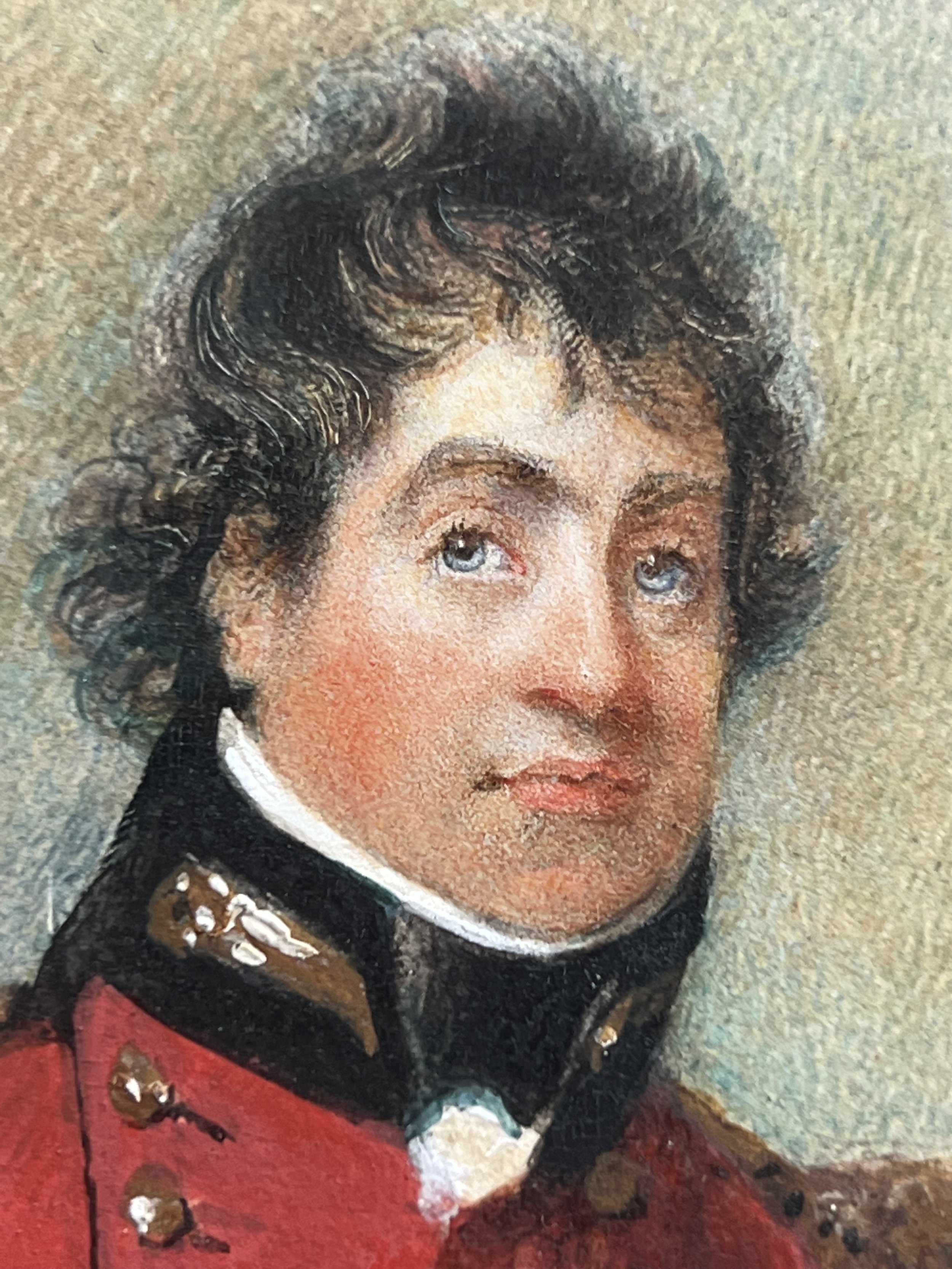
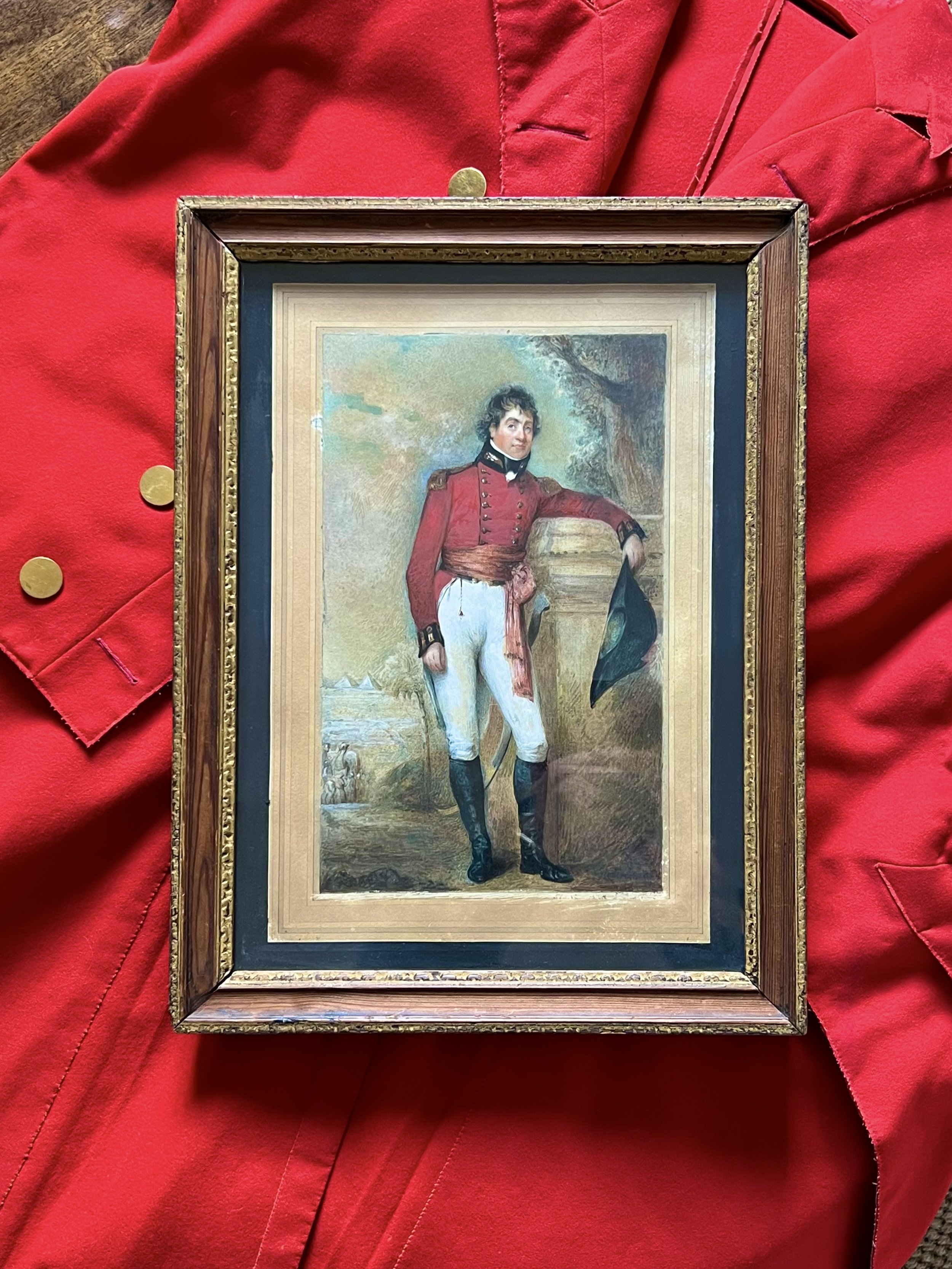
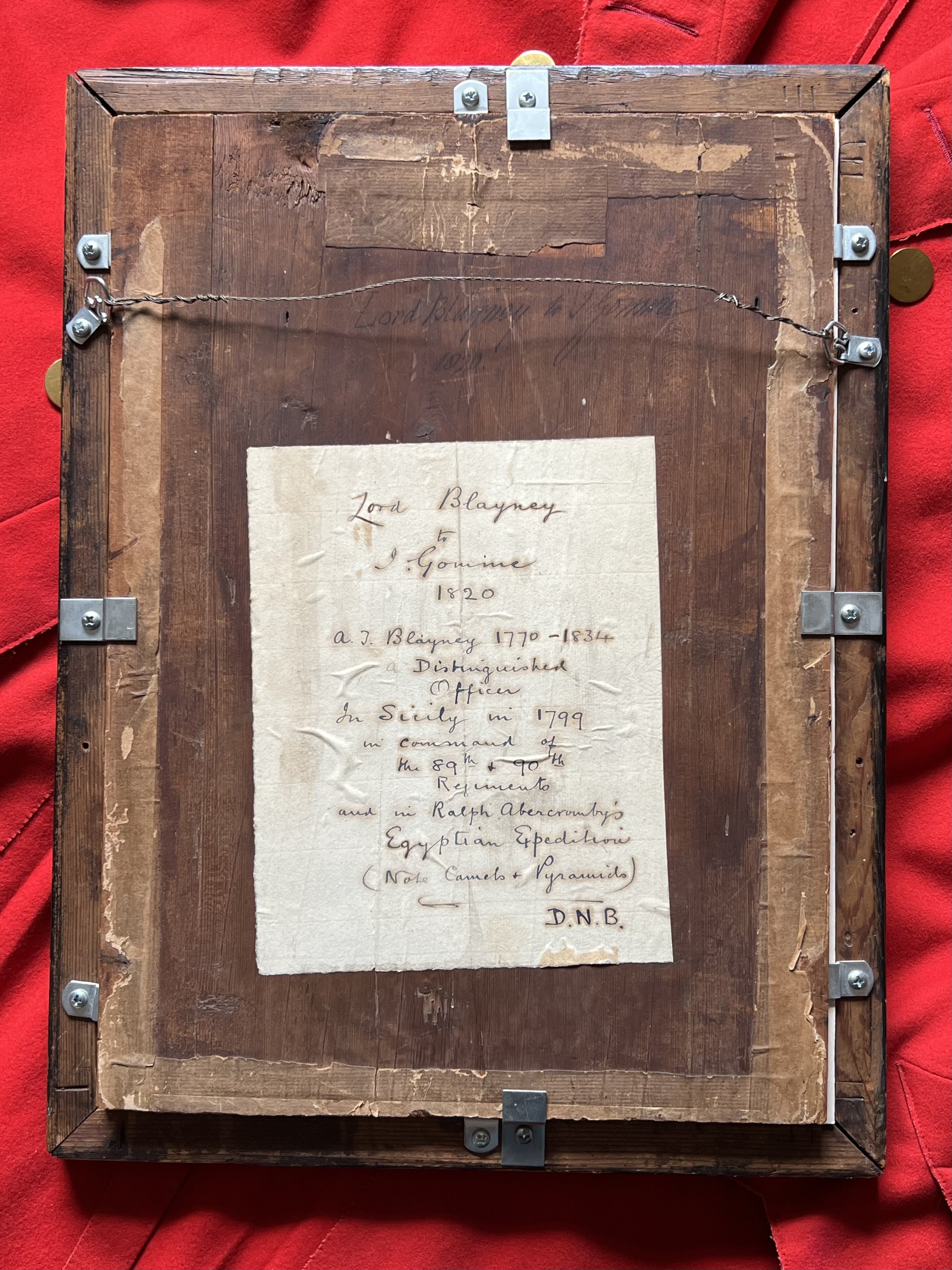
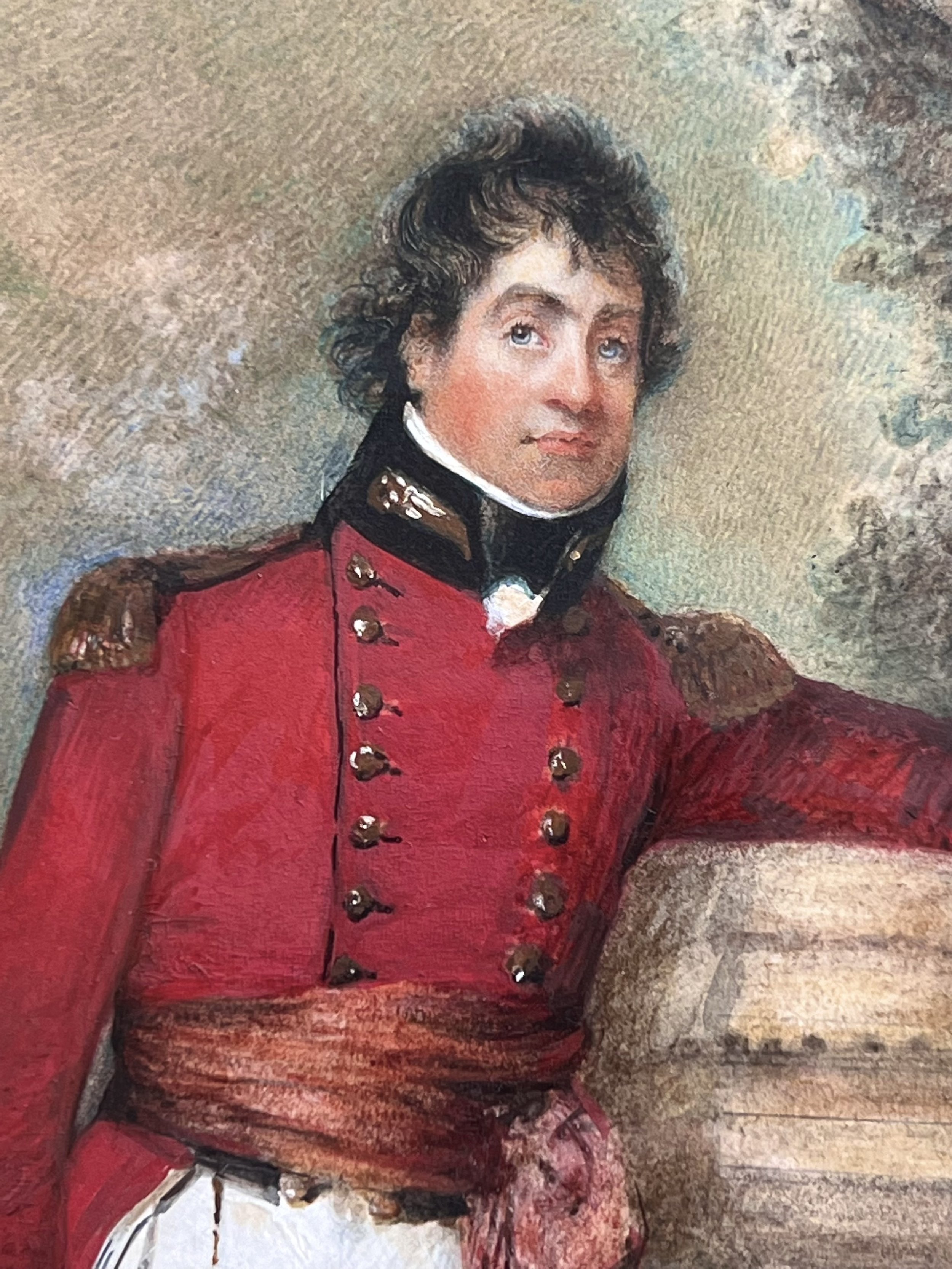
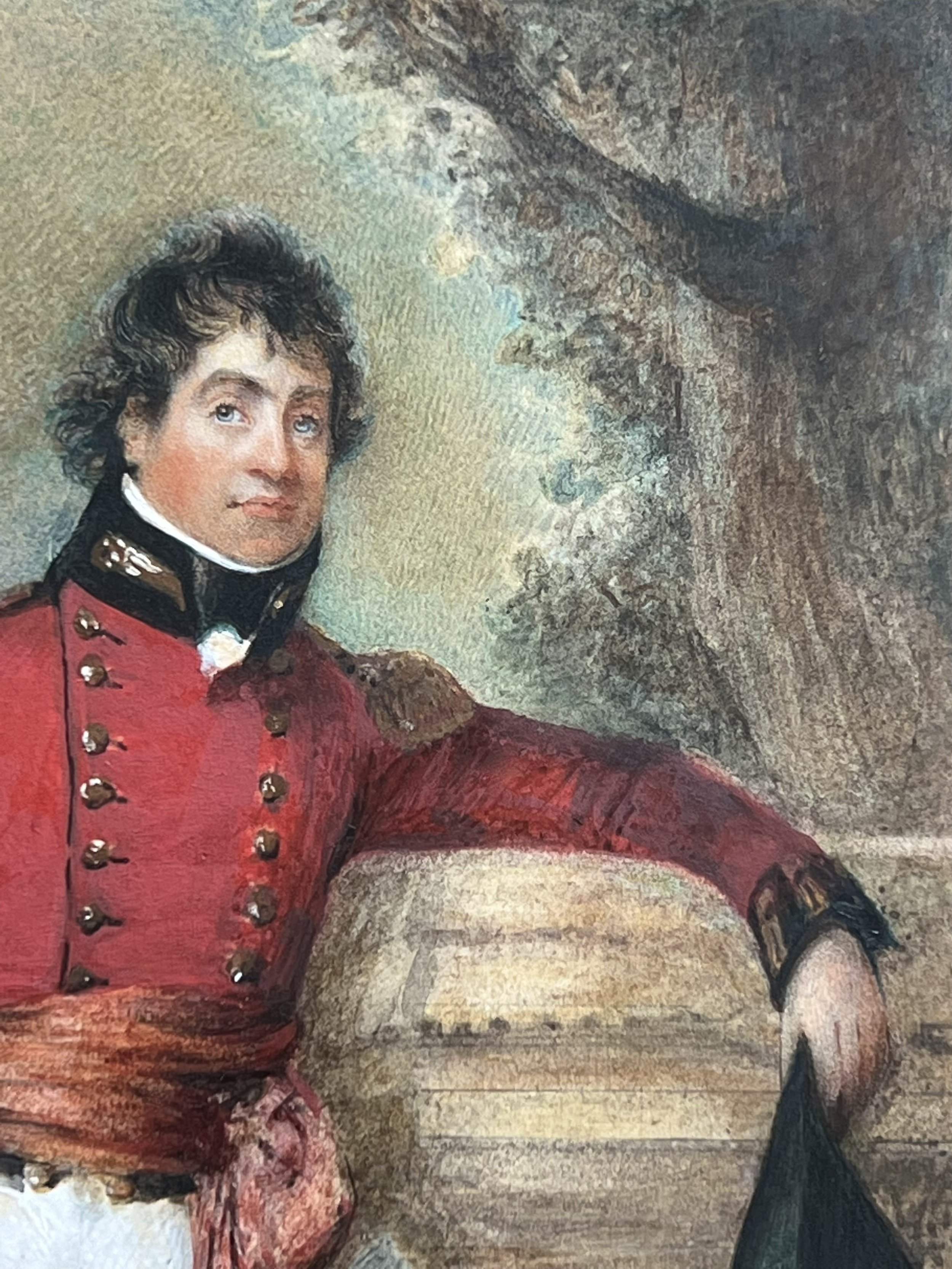
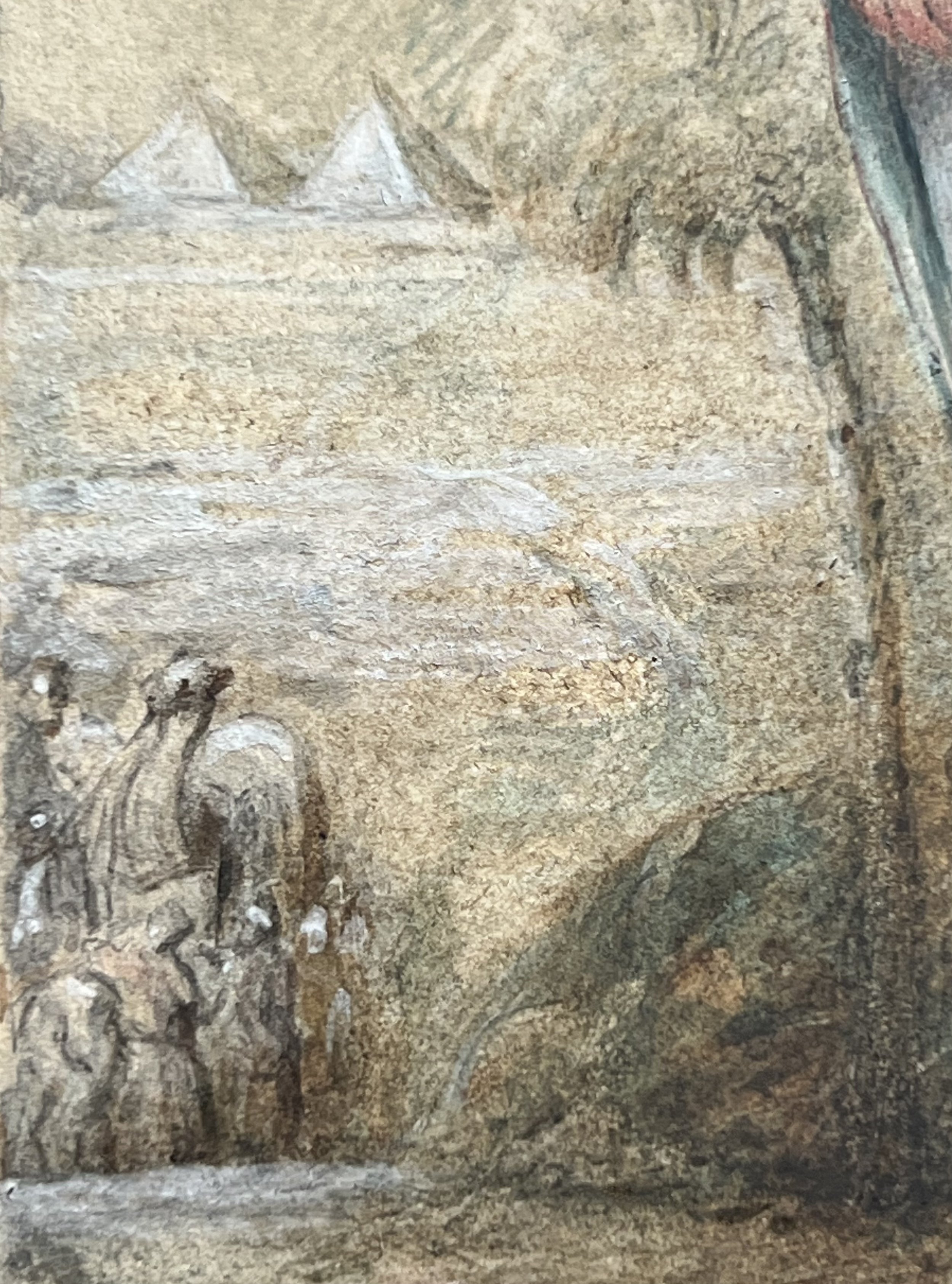


19TH CENTURY IRISH MILITARY WATERCOLOUR PORTRAIT OF LIEUTENANT GENERAL ANDREW THOMAS BLAYNEY 11TH BARON BLANEY (1770-1834)
Fine watercolour portrait of Lieutenant General Andrew Thomas Blaney, 11th Baron Blaney which was executed in the first quarter of the 19th century. An inscription verso written and laid down on laid paper reads "Lord Blayney to J. Gomme, 1820. A.J. Blayney 1770-1834, a distinguished officer in Sicily in 1799 in command of the 89th and 90th regiments and in Ralph Abercrombie's Egyptian Expedition (note camels and pyramids). This work was likely executed during the Egyptian expedition. It has been excised and laid down to the background paper with the rectangular bordering.
Baron Blaney was an Anglo-Irish peer. He ruled the Blayney estate at Castleblayney, County Monaghanfor fifty years from 1784 to 1834, and was one of the most illustrious soldiers ever to come from County Monaghan.
As commanding officer of the 89th Regiment of Foot, 'Blayney's Bloodhounds' as they were called, he fought with distinction in the Napoleonic Wars. He was taken prisoner at the Battle of Fuengirola, when making a raid from Gibraltar into Spain against a small group of Polish soldiers a tenth his number, and was kept prisoner for four years by the French government. His sabre is currently on exhibition in the Czartoryski Museum, in Kraków.
He wrote a two-volume account of his experiences in the Napoleonic Wars - Narrative of a Forced Journey through Spain and France as a Prisoner of War in the Years 1810 to 1814, by Major-General Lord Blayney (London, 1814).[1] He was captured by one of the O'Callaghans of Cullaville, a colonel in the French army and a prominent United Irishman who escaped after 1798. It is said he insisted on Blayney being held to ransom for some of the United Irishmen who were in British prisons.
During Blayney's long incarceration, the 2nd Earl of Caledon looked after his financial, domestic, and political affairs, and on his return, Blayney was given a seat in parliament for Caledon's infamous "rotten borough" of Old Sarum, Wiltshire.
Lord Blayney died on 8 April 1834 and was succeeded by his son Cadwallader, the 12th and last Lord.
This works is in a great state of conservation and is ready hang and enjoy in its original antique wooden frame
Higher resolution images on request.
Worldwide shipping available.
Sheet: 18cm x 28cm Framed: 31cm x 41cm
SOLD.

